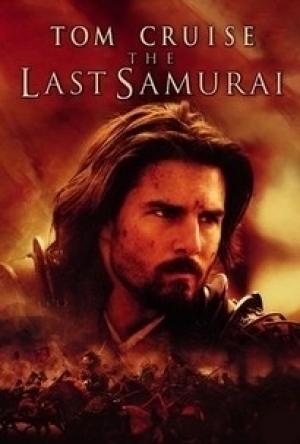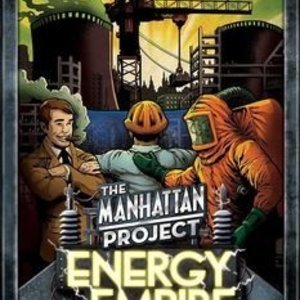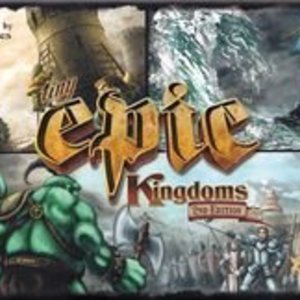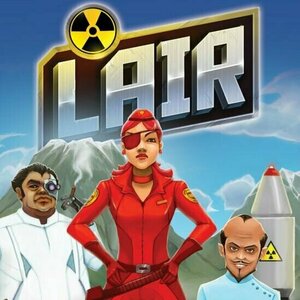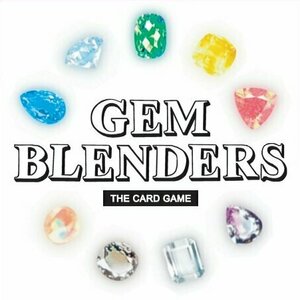Search
Ryan Hill (152 KP) rated The Last Samurai (2003) in Movies
Jun 23, 2019
" I will tell you, how he lived"
The honour and code of the samurai has always been enticing to a Western civilisation that is far removed from such customs, which perhaps makes The Last Samurai such an enticing, enigmatic film. Edward Zwick crafts quite an epic adventure rich in mythology & thematic resonance that while traditionally Hollywood in its construction still manages to exist a cut above many such movies of its ilk, a touch of class surrounding how the story of Captain Nathan Algren is put together, based as it is on several real life legendary American figures who played key roles in the Satsuma Rebellion in Japan during the late 19th century. This isn't a direct re-telling of those events but serves as a leaping off point to construct a tale about a stranger in a strange land, of a man haunted by fighting an unjust war who rediscovers his honour & place in the world through a dying culture. Zwick's film is slick, sweeping, beautifully shot and frequently involving, backed up by a strong performance by Tom Cruise in one of those roles that remind you just what a good actor he can be.
In the role of Algren, Cruise begins a dejected man living out of a bottle, bereft of purpose & suffering post-Civil War nightmares of a man touted as a hero despite feeling the guilt of slaughtering Indians crushed under the might of a military machine; in that sense, The Last Samurai is very anti-war in its message, John Logan's story painting the Americans and specifically the Imperialist Japanese not in the greatest light. Cruise takes Algren on a traditional voyage of discovery, first pitted against the samurai code & eventually becoming consumed by it, consumed by the similarity of the way of the warrior between both cultures - and Ken Watanabe's dignified samurai 'rebel' Katsumoto learns from him, as well as the other way around, with Cruise remaining stoic & only getting flashes of a chance to display the usual Cruise charm, but that's OK - Algren isn't the kind of character to benefit from that, Cruise's natural magnetism is enough here. Wit is provided thankfully through, albeit briefly, Billy Connolly as a tough old Irish veteran & chiefly Timothy Spall as our portly 'narrator' of sorts, who serves to help mythologise Algren & the legend itself. Zwick is most concerned with that, you see, the idea of legends and how men become them, exploring that concept alongside digging into the cultural rituals and practises of a changing Japan.
Algren's story is placed at a time when the old ways of Japan were shifting, under the pressures of global politics & business; the Emperor here is a naive young man, sitting on an empty throne, looking to Watanabe for validation as his advisor's push to quash a rebellion fighting to preserve the old ways, preserve Japanese interests as America knocks on the door. That's why Cruise's role here is so interesting, his character learning of the samurai code & helping those around him remember their history, and Zwick explores well the concept of national identity alongside personal ideas of myth, legend & destiny. It all boils together in a careful script, never overblown, which neatly develops the relationships involved & helps you fully believe Algren's transformation into the eponymous 'last samurai'. Along the way, Zwick doesn't forget theatrics - staging plenty of well staged & intense fight scenes which utilise the strong Japanese production design, before building to a quite epic war climax with army pitted against army, with personal stakes cutting through it, backed up indeed by another superlative score by Hans Zimmer. It becomes more than just a historical swords & armour film, reaching deeper on several levels.
What could have been a slow paced, potentially ponderous movie is avoided well by Edward Zwick, who with The Last Samurai delivers one of the stronger historical adventure epics of recent years. Beautifully shot in many places, with some excellent cinematography & production standards, not to mention an impressive script well acted in particular by Tom Cruise & Ken Watanabe, Zwick creates a recognisably Hollywood picture but for once a movie that doesn't dumb down, doesn't pander and ultimately serves as an often involving, often damn well made story. Especially one to check out if you love the way of the samurai.
In the role of Algren, Cruise begins a dejected man living out of a bottle, bereft of purpose & suffering post-Civil War nightmares of a man touted as a hero despite feeling the guilt of slaughtering Indians crushed under the might of a military machine; in that sense, The Last Samurai is very anti-war in its message, John Logan's story painting the Americans and specifically the Imperialist Japanese not in the greatest light. Cruise takes Algren on a traditional voyage of discovery, first pitted against the samurai code & eventually becoming consumed by it, consumed by the similarity of the way of the warrior between both cultures - and Ken Watanabe's dignified samurai 'rebel' Katsumoto learns from him, as well as the other way around, with Cruise remaining stoic & only getting flashes of a chance to display the usual Cruise charm, but that's OK - Algren isn't the kind of character to benefit from that, Cruise's natural magnetism is enough here. Wit is provided thankfully through, albeit briefly, Billy Connolly as a tough old Irish veteran & chiefly Timothy Spall as our portly 'narrator' of sorts, who serves to help mythologise Algren & the legend itself. Zwick is most concerned with that, you see, the idea of legends and how men become them, exploring that concept alongside digging into the cultural rituals and practises of a changing Japan.
Algren's story is placed at a time when the old ways of Japan were shifting, under the pressures of global politics & business; the Emperor here is a naive young man, sitting on an empty throne, looking to Watanabe for validation as his advisor's push to quash a rebellion fighting to preserve the old ways, preserve Japanese interests as America knocks on the door. That's why Cruise's role here is so interesting, his character learning of the samurai code & helping those around him remember their history, and Zwick explores well the concept of national identity alongside personal ideas of myth, legend & destiny. It all boils together in a careful script, never overblown, which neatly develops the relationships involved & helps you fully believe Algren's transformation into the eponymous 'last samurai'. Along the way, Zwick doesn't forget theatrics - staging plenty of well staged & intense fight scenes which utilise the strong Japanese production design, before building to a quite epic war climax with army pitted against army, with personal stakes cutting through it, backed up indeed by another superlative score by Hans Zimmer. It becomes more than just a historical swords & armour film, reaching deeper on several levels.
What could have been a slow paced, potentially ponderous movie is avoided well by Edward Zwick, who with The Last Samurai delivers one of the stronger historical adventure epics of recent years. Beautifully shot in many places, with some excellent cinematography & production standards, not to mention an impressive script well acted in particular by Tom Cruise & Ken Watanabe, Zwick creates a recognisably Hollywood picture but for once a movie that doesn't dumb down, doesn't pander and ultimately serves as an often involving, often damn well made story. Especially one to check out if you love the way of the samurai.
Matthew Krueger (10051 KP) rated The Manhattan Project: Energy Empire in Tabletop Games
Feb 22, 2021
Excellent Work Placement Game
The Manhattan Project: Energy Empire- is a excellent work placement game. I love work placement games and this one is one of them. Lets talk more about the game.
Players sit in the roles of countries trying to develop industry and energy production over a period of time roughly from the end of World War II to the present day. Throughout the game, players will construct buildings, power plants as dice, and manage the pollution in their environment with the aim of scoring the most points.
To begin play, the main board for Energy Empire is seeded with starting Building cards. These are divided into three different sectors: Government spaces, Industry spaces, and Commerce spaces. A set of pollution tokens, depending on the number of players, is also stacked on a track as the game timer.
Once the game begins, it flows continuously without rounds. Each player chooses, on their turn, to take a Work Turn or a Generate Turn.
Work Turn- During this type of turn, players must place a single worker on the main board on one of the spaces which represent activities and resources to collect. For example, this may be gaining science, steel, or purchasing oil. Afterwards, depending on which sector the player placed their worker, they can activate any previously purchased buildings, assuming they have enough workers and/or energy. Players can also activate their nation card and move up on the United Nations track, which is a pure competition for end game points. Energy is also used if a player wishes to place a worker on a space occupied by another worker. The player must place additional energy under the worker until their placement stack is larger than any other already placed.
Generate Turn: This type of turn represents the player resetting their work potential for a new set of placing workers. They do this by first potentially collecting an achievement which represents end game points for a variety of goals. They then recall any workers to their Player Mat and discard all Energy tokens. Players can also spend any oil resources to gain oil power plant dice. Finally the player rolls any or all power plant dice they have. This might include Solar/Wind (green dice), Hydro Power (blue dice, limited to one per player), Coal (black dice), and Nuclear (yellow dice). The resulting number of lightning bolts on the dice are delivered as energy tokens to the player. If a clean energy source rolled the highest cardinal number, the player does not collect pollution. If coal, oil, or nuclear dice resulted in the highest number, then the player places a single pollution token into their environment. Players continue this process one after another until a predesignated number of pollution tokens are removed from the game. Players get one final turn and then points are tallied. Players receive points for keeping their player mat free of pollution, building power plants, the United Nations track, and various points for each building constructed.
The most engaging part of the game and the main reason to seek it out, comes from the theme of global power intrigue. The building cards show off the exceptional art in the game.
Manhattan Project: Energy Empire Cards
The global impact cards for the first half of the game are green with a milder impact. Once they go red, prepare for some serious negative events. On top of this theme, the actions associated with everything in the game fit just right. The concept in game actions connect directly to the theme concept. In addition, the country actions to move up on the United Nations track also represent the tone and success formulas for those countries. The mechanism for rolling dice to gain energy and how much pollution is delivered feels just perfect given the competing goals of clean environments and high energy production.
The worker placement mechanism itself (largest stack among existing workers) is not new, but it is just the right mechanism to promote the overall feeling of energy competition. Choosing the space on which to place a worker is highly engaging and the choices tense to maximize efficiency. It is easy to connect with both strategy and tactics in this game.
Even with this engagement, it is also easy to see optimal routes for gaining points assuming opponents follow their strategies. It’s not “easy”, but it is possible to not even worry about opponents blocking a particular path to victory with low numbers of players.
Its a excellent work placement game. One i highly recordmend getting and play.
Players sit in the roles of countries trying to develop industry and energy production over a period of time roughly from the end of World War II to the present day. Throughout the game, players will construct buildings, power plants as dice, and manage the pollution in their environment with the aim of scoring the most points.
To begin play, the main board for Energy Empire is seeded with starting Building cards. These are divided into three different sectors: Government spaces, Industry spaces, and Commerce spaces. A set of pollution tokens, depending on the number of players, is also stacked on a track as the game timer.
Once the game begins, it flows continuously without rounds. Each player chooses, on their turn, to take a Work Turn or a Generate Turn.
Work Turn- During this type of turn, players must place a single worker on the main board on one of the spaces which represent activities and resources to collect. For example, this may be gaining science, steel, or purchasing oil. Afterwards, depending on which sector the player placed their worker, they can activate any previously purchased buildings, assuming they have enough workers and/or energy. Players can also activate their nation card and move up on the United Nations track, which is a pure competition for end game points. Energy is also used if a player wishes to place a worker on a space occupied by another worker. The player must place additional energy under the worker until their placement stack is larger than any other already placed.
Generate Turn: This type of turn represents the player resetting their work potential for a new set of placing workers. They do this by first potentially collecting an achievement which represents end game points for a variety of goals. They then recall any workers to their Player Mat and discard all Energy tokens. Players can also spend any oil resources to gain oil power plant dice. Finally the player rolls any or all power plant dice they have. This might include Solar/Wind (green dice), Hydro Power (blue dice, limited to one per player), Coal (black dice), and Nuclear (yellow dice). The resulting number of lightning bolts on the dice are delivered as energy tokens to the player. If a clean energy source rolled the highest cardinal number, the player does not collect pollution. If coal, oil, or nuclear dice resulted in the highest number, then the player places a single pollution token into their environment. Players continue this process one after another until a predesignated number of pollution tokens are removed from the game. Players get one final turn and then points are tallied. Players receive points for keeping their player mat free of pollution, building power plants, the United Nations track, and various points for each building constructed.
The most engaging part of the game and the main reason to seek it out, comes from the theme of global power intrigue. The building cards show off the exceptional art in the game.
Manhattan Project: Energy Empire Cards
The global impact cards for the first half of the game are green with a milder impact. Once they go red, prepare for some serious negative events. On top of this theme, the actions associated with everything in the game fit just right. The concept in game actions connect directly to the theme concept. In addition, the country actions to move up on the United Nations track also represent the tone and success formulas for those countries. The mechanism for rolling dice to gain energy and how much pollution is delivered feels just perfect given the competing goals of clean environments and high energy production.
The worker placement mechanism itself (largest stack among existing workers) is not new, but it is just the right mechanism to promote the overall feeling of energy competition. Choosing the space on which to place a worker is highly engaging and the choices tense to maximize efficiency. It is easy to connect with both strategy and tactics in this game.
Even with this engagement, it is also easy to see optimal routes for gaining points assuming opponents follow their strategies. It’s not “easy”, but it is possible to not even worry about opponents blocking a particular path to victory with low numbers of players.
Its a excellent work placement game. One i highly recordmend getting and play.

Lowlands
Tabletop Game
The low land is a rough area where hard-working folk make a living by the sweat of their brow. Under...
BoardGames 2018Games FarmGames
Lee Ronaldo recommended Anthem of the Sun by Grateful Dead in Music (curated)
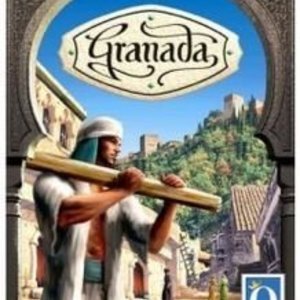
Granada
Tabletop Game
Granada – many artisans, traders and entire families have settled at the foot of the Sierra Nevada...
BoardGames VersionofAlhambra GatewayGames TileLayinggames
Purple Phoenix Games (2266 KP) rated Tiny Epic Kingdoms in Tabletop Games
Jul 30, 2019
Behold – the Tiny Epic game that started the saga. Tiny Epic Kingdoms is the OG, and it’s about time we got around to reviewing it. It’s tiny. It’s epic. Keep reading to find out if it’s a keeper!
In Tiny Epic Kingdoms, you are the ruler of (you guessed it) a tiny kingdom. You, however, are not content with simply maintaining your realm – you have plans to expand your borders and make your kingdom not-so-tiny! Send your adventurers out to explore new lands, learn new magics, construct towers to assert your dominance, and fight off others who would stand in your way! Do you have the strategy necessary to outwit your competitors and grow your kingdom? Play to find out!
DISCLAIMER: There are several expansions to this game, but we are not reviewing them at this time. Should we review them in the future we will either update this review or post a link to the new material here. -T
Tiny Epic Kingdoms is a game of worker placement, area control, and action point allowance. Players take turns gathering resources, buildings towers, researching magic, or exploring (and potentially waging war) in new lands. As the active player, on your turn you will select and perform one of the six available actions from the Action Card: Patrol, Quest, Build, Research, Expand, or Trade. Following your action, and still on your turn, the remaining players will either decide to perform the same action you chose, or collect resources. Once everyone has had the chance to act, your turn is over. The next player now becomes the active player and the process repeats with one big change – the action you chose on your turn is no longer available for selection. Each subsequent active player will always have 1 fewer action choice on their turn. This process repeats until there are no more actions available. When this happens, the Action Card is cleared and all actions are available once more for selection. Strategy is key – which action can you choose on your turn to best benefit you while also inhibiting your competitors? The game ends at the end of the turn in which one of these three things has happened: a player has all of their meeples in play, a player has built the 6th level on the tower card, or a player has reached the 5th level of magic on their faction card. End-game points are scored based on meeples in play, magic level, tower level, and control of Capital Cities. The player with the highest score wins!
For such a small game, there’s definitely a fair amount of strategy involved in Tiny Epic Kingdoms. You’ve got to decide on the best approach for you, and it must be adaptable to any given situation. Do you play it safe, quietly collecting resources, trying to achieve your end-game goals the fastest? Or do you venture out to confront your opponents, trying to usurp their territory and resources and take them out as your competition? Or maybe you try to stay civil, but an opponent is threatening your progress and now you’ve got to fight back? There are lots of strategic options, and every game feels like a new challenge.
One thing I enjoy about Tiny Epic Kingdoms is that you get to act on every single turn, even if you aren’t the active player. You don’t have to sit there and watch your friends play – you have the chance to benefit during every single turn, even if it’s merely collecting resources. The opportunity to act on every turn also adds a little bit of ‘take that’ to this game. I might choose an action on my turn as the active player that I know one of my competitors cannot perform – thus forcing them to collect resources and waste the opportunity to perform that specific action for an entire round. And since that action cannot be picked again until all available actions have already been chosen, I’ve successfully blocked their progress in a certain area of play. Your strategy has to extend beyond just your turn as the active player – you must consider all options for your opponents as well.
The thing I don’t necessarily like about Tiny Epic Kingdoms is that the gameplay can be a little stale. Unless you’re playing with people who actively try to engage with you, it is extremely easy to just stay in your own realm and not even interact with anyone at all. There’s no forced interaction in this game, and although it is admittedly nice sometimes, mostly it just feels like we’re all playing the same game alone. It’s like we all just take turns performing/following actions until someone has triggered the end-game.
Overall, I like Tiny Epic Kingdoms. It’s not my favorite Tiny Epic game, but it’s a good one. There’s a decent amount of strategy involved, but at times it can feel more like a ‘take that’ type game to me. The lack of forced player interaction can lead to dull gameplay and a lackluster experience. It’s not a bad game. It’s just not the most epic Tiny Epic game out there, in my opinion. That’s why Purple Phoenix Games gives it a regal 14 / 18.
In Tiny Epic Kingdoms, you are the ruler of (you guessed it) a tiny kingdom. You, however, are not content with simply maintaining your realm – you have plans to expand your borders and make your kingdom not-so-tiny! Send your adventurers out to explore new lands, learn new magics, construct towers to assert your dominance, and fight off others who would stand in your way! Do you have the strategy necessary to outwit your competitors and grow your kingdom? Play to find out!
DISCLAIMER: There are several expansions to this game, but we are not reviewing them at this time. Should we review them in the future we will either update this review or post a link to the new material here. -T
Tiny Epic Kingdoms is a game of worker placement, area control, and action point allowance. Players take turns gathering resources, buildings towers, researching magic, or exploring (and potentially waging war) in new lands. As the active player, on your turn you will select and perform one of the six available actions from the Action Card: Patrol, Quest, Build, Research, Expand, or Trade. Following your action, and still on your turn, the remaining players will either decide to perform the same action you chose, or collect resources. Once everyone has had the chance to act, your turn is over. The next player now becomes the active player and the process repeats with one big change – the action you chose on your turn is no longer available for selection. Each subsequent active player will always have 1 fewer action choice on their turn. This process repeats until there are no more actions available. When this happens, the Action Card is cleared and all actions are available once more for selection. Strategy is key – which action can you choose on your turn to best benefit you while also inhibiting your competitors? The game ends at the end of the turn in which one of these three things has happened: a player has all of their meeples in play, a player has built the 6th level on the tower card, or a player has reached the 5th level of magic on their faction card. End-game points are scored based on meeples in play, magic level, tower level, and control of Capital Cities. The player with the highest score wins!
For such a small game, there’s definitely a fair amount of strategy involved in Tiny Epic Kingdoms. You’ve got to decide on the best approach for you, and it must be adaptable to any given situation. Do you play it safe, quietly collecting resources, trying to achieve your end-game goals the fastest? Or do you venture out to confront your opponents, trying to usurp their territory and resources and take them out as your competition? Or maybe you try to stay civil, but an opponent is threatening your progress and now you’ve got to fight back? There are lots of strategic options, and every game feels like a new challenge.
One thing I enjoy about Tiny Epic Kingdoms is that you get to act on every single turn, even if you aren’t the active player. You don’t have to sit there and watch your friends play – you have the chance to benefit during every single turn, even if it’s merely collecting resources. The opportunity to act on every turn also adds a little bit of ‘take that’ to this game. I might choose an action on my turn as the active player that I know one of my competitors cannot perform – thus forcing them to collect resources and waste the opportunity to perform that specific action for an entire round. And since that action cannot be picked again until all available actions have already been chosen, I’ve successfully blocked their progress in a certain area of play. Your strategy has to extend beyond just your turn as the active player – you must consider all options for your opponents as well.
The thing I don’t necessarily like about Tiny Epic Kingdoms is that the gameplay can be a little stale. Unless you’re playing with people who actively try to engage with you, it is extremely easy to just stay in your own realm and not even interact with anyone at all. There’s no forced interaction in this game, and although it is admittedly nice sometimes, mostly it just feels like we’re all playing the same game alone. It’s like we all just take turns performing/following actions until someone has triggered the end-game.
Overall, I like Tiny Epic Kingdoms. It’s not my favorite Tiny Epic game, but it’s a good one. There’s a decent amount of strategy involved, but at times it can feel more like a ‘take that’ type game to me. The lack of forced player interaction can lead to dull gameplay and a lackluster experience. It’s not a bad game. It’s just not the most epic Tiny Epic game out there, in my opinion. That’s why Purple Phoenix Games gives it a regal 14 / 18.
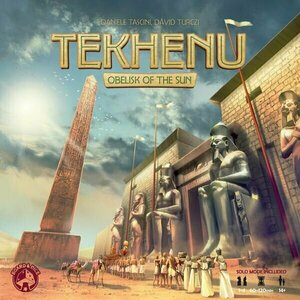
Tekhenu: Obelish of the Sun
Tabletop Game
Four millennia ago on the eastern bank of the Nile river was laid the foundation of the Temple of...
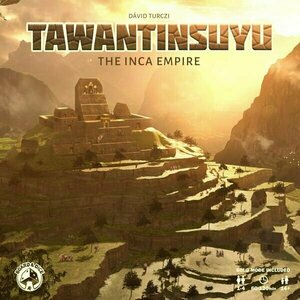
Tawantinsuyu: The Inca Empire
Tabletop Game
The great Sapa Inca Pachacuti turned to his offspring and ordered them to worship Inti, the Sun God,...
Purple Phoenix Games (2266 KP) rated Lair in Tabletop Games
Feb 13, 2020
Raise your hand if you’ve ever dreamed of being a superhero – fighting crime and saving lives. Great! This game is not about that. Instead, embrace your inner villain as you work to create the greatest evil lair in the world! Dig deep and put your villainy to the test as you command Henchmen to build nefarious rooms and outmaneuver the other villains vying for power in this evil organization.
Lair is a worker placement game in which players are racing to complete the construction of a secret lair for their evil boss, Mr. White. Played over a series of rounds, players select turn order and command henchmen to construct new rooms, collect supplies, interfere with your competitors’ plans, or dig deeper into the volcano in which this lair is housed. The first player to reach the core of the volcano, thus completing the lair, is the winner!
Disclaimer: We were provided a copy of Lair for the purposes of this review. I do not intend to rehash the entire rulebook, but rather provide an overview of the rules and comment on the gameplay. For a more in-depth look at the rules, find the game at your FLGS or directly from the publisher! -L
To setup, place the foundation cards at the top of the table and then place 4 elevator cards in a single line underneath the center-most foundation card, and put the Core card at the bottom of the line. Flip the top elevator card, give each player their components (Player Card, Boss token, and 2 Henchmen tokens), create a room card pool, and you are ready to go! Choose the first player as described in the rule book. To start each round, players will choose turn order. All spaces in the turn order track offer different resources/rewards (collect Work Tokens, claim room cards, etc), so going first each turn might not necessarily be best for your strategy. Once turn order is established, players take turns moving 1 worker (either a Henchmen or Boss), and possibly performing the action of the room card to which they moved. Each move costs 1 Work Token, and is paid to the “bank.” In order to perform a room’s action, you must play your Boss token to that card, and there must be a Henchmen token already in the room. Here’s the catch – if the Henchmen token belongs to an opponent, you pay THEM 1 Work Token (instead of the bank) for having moved into a room that they have claimed. Do you want to use a room action enough to justify giving an opponent another Work Token to be used against you? Or can you rework your strategy to avoid using that action? Play continues in the round as long as players have Work Tokens to spend. Once you run out of actions, or choose to stop, you ‘retire’ and pass until the next round begins. There is an incentive to retiring early, though – the first player to retire in a round is the first player to choose their turn order in the next round. Play continues until one player has reached the final spot on the elevator track, the Core. The game immediately ends, and that player is the victor!
So how does Lair play? In my opinion, it’s a great little game. There is so much strategy involved for such a small game, and that is really what takes it to the next level for me. Let’s start with selecting turn order. In most games, this means vying for first dibs in the next round. In this game, however, each different turn order slot provides different resources/rewards. Depending on your strategy, you may really need that 3rd slot, or even the last one! So going first is not necessarily always the best thing in this game. You have to balance the risk of going later in the round with the reward of your chosen resources. The next strategic part of this game has to do with Henchmen placement. As I stated earlier, in order to use a room’s action, you must move your Boss to that card, and there must already be a Henchmen present. If the Henchmen belongs to an opponent, you pay them instead of the bank. This is vital because Work Tokens are what allow you to take turns, so paying an opponent means giving them a chance for another turn next round. Is it worth rewarding an opponent for use of a room action? On the flip side – can you strategically place your Henchmen to ensure that opponents have to pay you to complete their goals? The Boss may be in charge, but the Henchmen are the underdogs in this game for sure.
Components. The components are pretty good quality in this game. The cards are nice and thick, the art is thematic, and the wooden and cardboard tokens are sturdy. No complaints there. The only qualm that we had with Lair has to do with iconography. Every possible action has a corresponding symbol, and that is what is shown on the card. The downside is that there are so many symbols and icons, so there is a bit of a learning curve when it comes to playing Lair for the first time. To alleviate some of the confusion, the game comes with some nice reference cards, and the symbols do get easier to recognize with more plays. But just be warned: at first you may be a little confused with all of the symbology.
As you can see by our ratings, we kind of had mixed feelings about this one. For a game that seems so small and light, it actually has a lot of bulk to it. Between strategic choices and learning symbology, this might not be a game we can just pull out for a quick filler, but I think that it’s good enough to stand on its own. Sometimes physically smaller games can be overlooked, but don’t let the size fool you – Lair packs a punch. Purple Phoenix Games gives Lair a nefarious 12 / 18.
Lair is a worker placement game in which players are racing to complete the construction of a secret lair for their evil boss, Mr. White. Played over a series of rounds, players select turn order and command henchmen to construct new rooms, collect supplies, interfere with your competitors’ plans, or dig deeper into the volcano in which this lair is housed. The first player to reach the core of the volcano, thus completing the lair, is the winner!
Disclaimer: We were provided a copy of Lair for the purposes of this review. I do not intend to rehash the entire rulebook, but rather provide an overview of the rules and comment on the gameplay. For a more in-depth look at the rules, find the game at your FLGS or directly from the publisher! -L
To setup, place the foundation cards at the top of the table and then place 4 elevator cards in a single line underneath the center-most foundation card, and put the Core card at the bottom of the line. Flip the top elevator card, give each player their components (Player Card, Boss token, and 2 Henchmen tokens), create a room card pool, and you are ready to go! Choose the first player as described in the rule book. To start each round, players will choose turn order. All spaces in the turn order track offer different resources/rewards (collect Work Tokens, claim room cards, etc), so going first each turn might not necessarily be best for your strategy. Once turn order is established, players take turns moving 1 worker (either a Henchmen or Boss), and possibly performing the action of the room card to which they moved. Each move costs 1 Work Token, and is paid to the “bank.” In order to perform a room’s action, you must play your Boss token to that card, and there must be a Henchmen token already in the room. Here’s the catch – if the Henchmen token belongs to an opponent, you pay THEM 1 Work Token (instead of the bank) for having moved into a room that they have claimed. Do you want to use a room action enough to justify giving an opponent another Work Token to be used against you? Or can you rework your strategy to avoid using that action? Play continues in the round as long as players have Work Tokens to spend. Once you run out of actions, or choose to stop, you ‘retire’ and pass until the next round begins. There is an incentive to retiring early, though – the first player to retire in a round is the first player to choose their turn order in the next round. Play continues until one player has reached the final spot on the elevator track, the Core. The game immediately ends, and that player is the victor!
So how does Lair play? In my opinion, it’s a great little game. There is so much strategy involved for such a small game, and that is really what takes it to the next level for me. Let’s start with selecting turn order. In most games, this means vying for first dibs in the next round. In this game, however, each different turn order slot provides different resources/rewards. Depending on your strategy, you may really need that 3rd slot, or even the last one! So going first is not necessarily always the best thing in this game. You have to balance the risk of going later in the round with the reward of your chosen resources. The next strategic part of this game has to do with Henchmen placement. As I stated earlier, in order to use a room’s action, you must move your Boss to that card, and there must already be a Henchmen present. If the Henchmen belongs to an opponent, you pay them instead of the bank. This is vital because Work Tokens are what allow you to take turns, so paying an opponent means giving them a chance for another turn next round. Is it worth rewarding an opponent for use of a room action? On the flip side – can you strategically place your Henchmen to ensure that opponents have to pay you to complete their goals? The Boss may be in charge, but the Henchmen are the underdogs in this game for sure.
Components. The components are pretty good quality in this game. The cards are nice and thick, the art is thematic, and the wooden and cardboard tokens are sturdy. No complaints there. The only qualm that we had with Lair has to do with iconography. Every possible action has a corresponding symbol, and that is what is shown on the card. The downside is that there are so many symbols and icons, so there is a bit of a learning curve when it comes to playing Lair for the first time. To alleviate some of the confusion, the game comes with some nice reference cards, and the symbols do get easier to recognize with more plays. But just be warned: at first you may be a little confused with all of the symbology.
As you can see by our ratings, we kind of had mixed feelings about this one. For a game that seems so small and light, it actually has a lot of bulk to it. Between strategic choices and learning symbology, this might not be a game we can just pull out for a quick filler, but I think that it’s good enough to stand on its own. Sometimes physically smaller games can be overlooked, but don’t let the size fool you – Lair packs a punch. Purple Phoenix Games gives Lair a nefarious 12 / 18.
Purple Phoenix Games (2266 KP) rated Gem Blenders in Tabletop Games
Oct 24, 2019
Collectible Card Games (CCG) and Living Card Games (LCG) are enjoyed by the members of Purple Phoenix Games. From these genres we primarily play Lord of the Rings LCG, A Game of Thrones (2e) LCG, and DiceMasters (ok we kinda cheated here but it still applies). So we are no strangers to constructing decks or teams and going head-to-head to defeat opponents. When I heard about Gem Blenders being a CCG with an interesting theme, I knew we had to try it.
Gem Blenders is a competitive card game of upgrading (blending) heroes into stronger forces that will attack your opponent’s HP. The winner is the player who can decrease their opponent’s HP to zero first.
DISCLAIMER: We were provided a prototype copy of this game for the purposes of this review. As this is a preview copy of the game, I do not know if the final rules or components will be similar or different to what we were provided. Similarly, our copy came with two pre-constructed decks ready to duel. -T
To setup, players will need to construct their decks according to the construction requirements and limitations found in the rulebook. I will not be covering every rule found in the rulebook here, as the rules are very extensive. Once the four heroes per player are chosen, they must be arranged in a diamond pattern with the Left, Center, and Right heroes being on the “front line” and the Back hero being the sole back liner. Front line heroes can attack, but the hero in back cannot. Draw your opening hand of six cards and you are ready to play! Wait, you don’t like your initial draw? Ok then, shuffle back into your deck and draw a new set of six. You are ready to play!
On a turn a player will complete three phases. Firstly, draw a card. The next phase is to play cards from your hand. You are allowed to play one gem card per turn, so initially players will probably be attaching gems to heroes. Simply slide the gem card under the top of the hero card so that the colored gem graphic can be seen (see below). Other actions include attack (once per turn), blend or de-blend heroes, discard gems, activate hero effects, and play action cards.
Heroes will have effects printed on their cards with instructions on how to use them. You may use all four heroes’ effects if possible in any turn. Discarding gems is self-explanatory, and there are cards in the game that can activate or become more powerful depending on having gems in the discard pile. Action cards can help players manipulate their decks, search for specific cards, or even cancel another player’s action out of turn. They can be severely powerful, so there are strict limitations as to which Action cards and how many of them you may keep in your deck.
Blending heroes is a crux of the game and the way to make your heroes stronger in battle. By collecting the gems and attaching them to your heroes you are providing them with requirements for blending. You may only blend a hero when they have the appropriate gems attached to them according to the Blend card you wish to play. The hero then becomes the blended hero with the new effects and stronger Attack and Defense values. These are important stats for the Attack action. When a player Attacks, they choose which of their front line heroes they would like to send into battle (or all of them). The attackers may only attack the heroes directly opposite them on the table. So a Center hero may only attack the other Center hero across from them (in a 2 player game). Stats are simply compared and any attack power that remains undefended will be deducted from the defender player’s HP.
The last step of a turn is declaring your turn over. Then the next player may take their turn. Play will continue in this fashion until one player has zero HP and a winner is figured.
Components. To reiterate, we were provided a prototype copy of the game, so I will not comment on aspects that may be changed as a result of a successful Kickstarter campaign or through any stretch goals. I was given no information or scoops about what is planned, so I will merely comment on what I can here. This is a card game, and came to us in a box similar to that of the Tiny Epic series, but a bit smaller. It was enough for two constructed decks of 54 cards each and a couple reference cards. We were able to play the game right out of the box this way and that was very appreciated.
However, the card layout and art style of the game is where we have our issues. I recently turned 40 and, well, my eyesight isn’t what it used to be. When playing Gem Blenders, much of the game is about upgrading your forces and attacking your opponent(s). So when I look across the table at my opponent’s card, I want to be able to clearly see their Attack and Defense. Unfortunately, the text is so small in this version of the game that we were constantly asking each other what the A and D numbers were. Now, I mentioned earlier that we play and love DiceMasters as well, and that game also suffers from readability issues, so we can begrudgingly overlook that. I hope the finished version of the game addresses this and makes adjustments on visibility of important stats.
Also, the art style of the game just did not resonate with us at all. Again, it could be such that the art will change once the game is truly finished, but considering the cards we were provided, we were hoping for something a bit flashier or more polished. As you can see from the shots here on this review, the hero cards are all black and white, the gem cards have a colorful gem in the middle of the white background of the card with a smaller iteration of the gem in the upper portion of the card. The action cards are also the stark black and white similar to the hero cards. The blend cards feature different wallpapers with a somewhat improved illustration on the front. I found that I would rather see more of the text and battle stats than the illustrations of this game.
That all said, the game is really solid, the theme is interesting, and the game play is quite fun. If it looked better it would be a great option for a quick head-to-head CCG with an excellent and inventive theme. I do hope improvements to the game are planned, and if that’s the case then I will definitely be keeping it on my radar.
Gem Blenders is a competitive card game of upgrading (blending) heroes into stronger forces that will attack your opponent’s HP. The winner is the player who can decrease their opponent’s HP to zero first.
DISCLAIMER: We were provided a prototype copy of this game for the purposes of this review. As this is a preview copy of the game, I do not know if the final rules or components will be similar or different to what we were provided. Similarly, our copy came with two pre-constructed decks ready to duel. -T
To setup, players will need to construct their decks according to the construction requirements and limitations found in the rulebook. I will not be covering every rule found in the rulebook here, as the rules are very extensive. Once the four heroes per player are chosen, they must be arranged in a diamond pattern with the Left, Center, and Right heroes being on the “front line” and the Back hero being the sole back liner. Front line heroes can attack, but the hero in back cannot. Draw your opening hand of six cards and you are ready to play! Wait, you don’t like your initial draw? Ok then, shuffle back into your deck and draw a new set of six. You are ready to play!
On a turn a player will complete three phases. Firstly, draw a card. The next phase is to play cards from your hand. You are allowed to play one gem card per turn, so initially players will probably be attaching gems to heroes. Simply slide the gem card under the top of the hero card so that the colored gem graphic can be seen (see below). Other actions include attack (once per turn), blend or de-blend heroes, discard gems, activate hero effects, and play action cards.
Heroes will have effects printed on their cards with instructions on how to use them. You may use all four heroes’ effects if possible in any turn. Discarding gems is self-explanatory, and there are cards in the game that can activate or become more powerful depending on having gems in the discard pile. Action cards can help players manipulate their decks, search for specific cards, or even cancel another player’s action out of turn. They can be severely powerful, so there are strict limitations as to which Action cards and how many of them you may keep in your deck.
Blending heroes is a crux of the game and the way to make your heroes stronger in battle. By collecting the gems and attaching them to your heroes you are providing them with requirements for blending. You may only blend a hero when they have the appropriate gems attached to them according to the Blend card you wish to play. The hero then becomes the blended hero with the new effects and stronger Attack and Defense values. These are important stats for the Attack action. When a player Attacks, they choose which of their front line heroes they would like to send into battle (or all of them). The attackers may only attack the heroes directly opposite them on the table. So a Center hero may only attack the other Center hero across from them (in a 2 player game). Stats are simply compared and any attack power that remains undefended will be deducted from the defender player’s HP.
The last step of a turn is declaring your turn over. Then the next player may take their turn. Play will continue in this fashion until one player has zero HP and a winner is figured.
Components. To reiterate, we were provided a prototype copy of the game, so I will not comment on aspects that may be changed as a result of a successful Kickstarter campaign or through any stretch goals. I was given no information or scoops about what is planned, so I will merely comment on what I can here. This is a card game, and came to us in a box similar to that of the Tiny Epic series, but a bit smaller. It was enough for two constructed decks of 54 cards each and a couple reference cards. We were able to play the game right out of the box this way and that was very appreciated.
However, the card layout and art style of the game is where we have our issues. I recently turned 40 and, well, my eyesight isn’t what it used to be. When playing Gem Blenders, much of the game is about upgrading your forces and attacking your opponent(s). So when I look across the table at my opponent’s card, I want to be able to clearly see their Attack and Defense. Unfortunately, the text is so small in this version of the game that we were constantly asking each other what the A and D numbers were. Now, I mentioned earlier that we play and love DiceMasters as well, and that game also suffers from readability issues, so we can begrudgingly overlook that. I hope the finished version of the game addresses this and makes adjustments on visibility of important stats.
Also, the art style of the game just did not resonate with us at all. Again, it could be such that the art will change once the game is truly finished, but considering the cards we were provided, we were hoping for something a bit flashier or more polished. As you can see from the shots here on this review, the hero cards are all black and white, the gem cards have a colorful gem in the middle of the white background of the card with a smaller iteration of the gem in the upper portion of the card. The action cards are also the stark black and white similar to the hero cards. The blend cards feature different wallpapers with a somewhat improved illustration on the front. I found that I would rather see more of the text and battle stats than the illustrations of this game.
That all said, the game is really solid, the theme is interesting, and the game play is quite fun. If it looked better it would be a great option for a quick head-to-head CCG with an excellent and inventive theme. I do hope improvements to the game are planned, and if that’s the case then I will definitely be keeping it on my radar.
